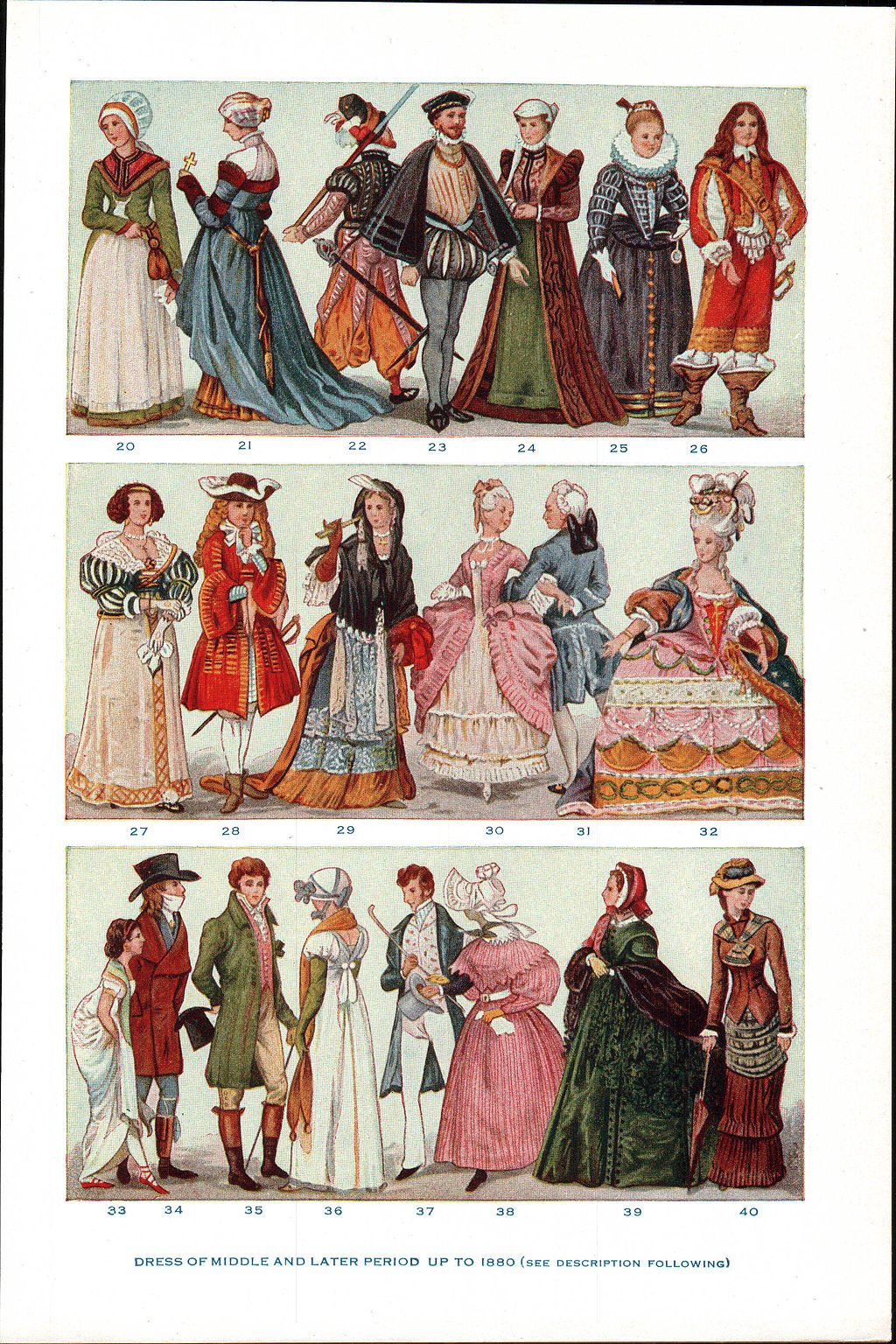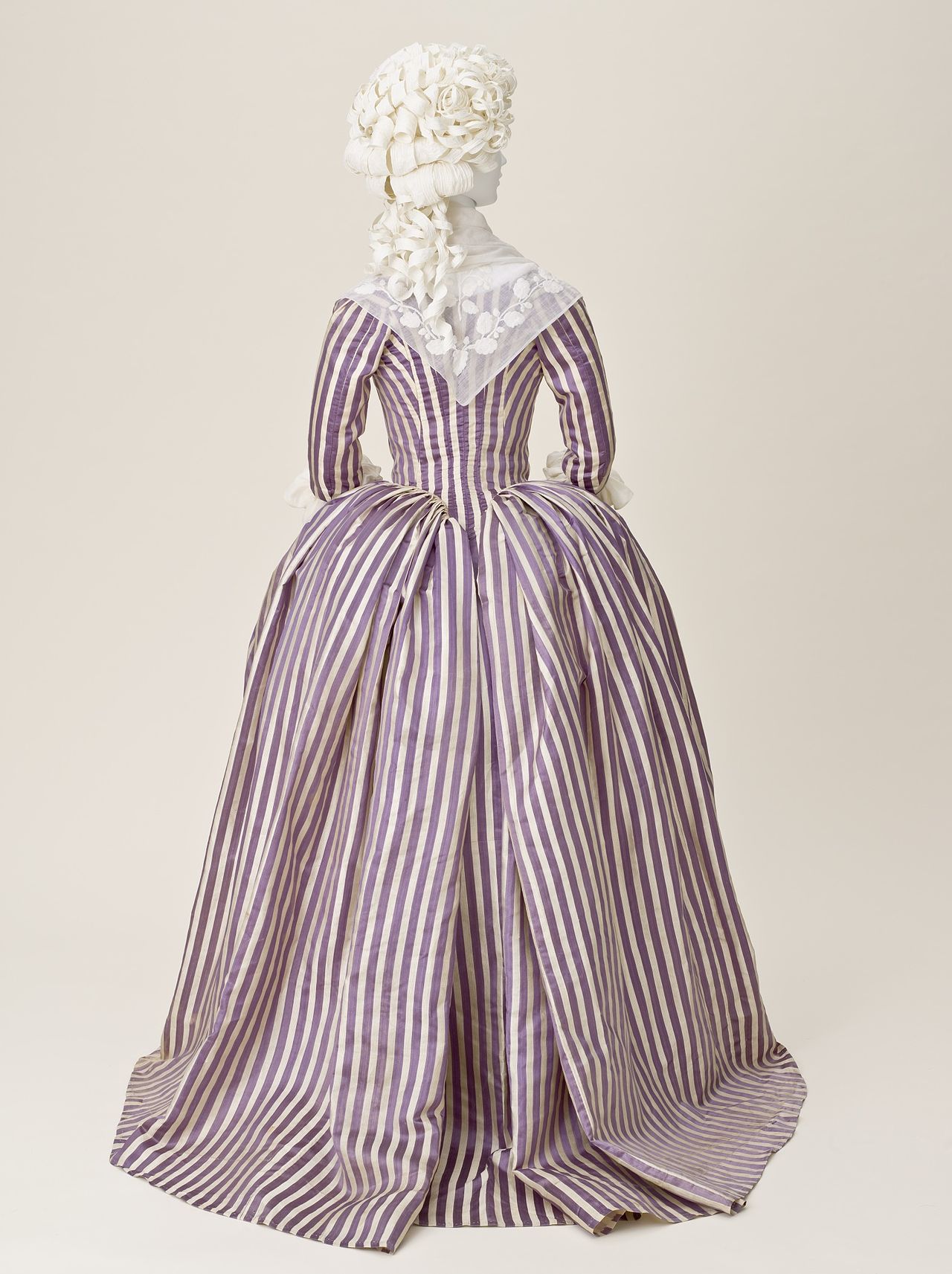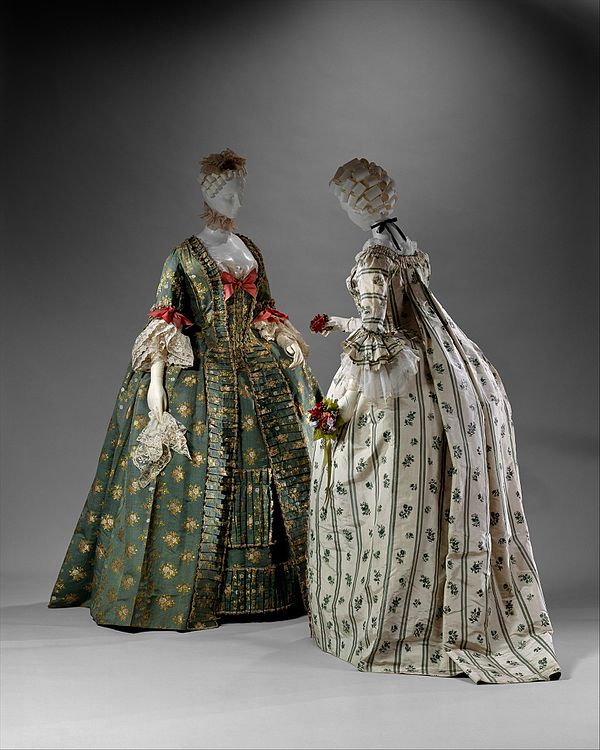The 18th century revolutionized economic, philosophical, and political ideals, as well as fashion concepts. The formal, stiff, and elaborately ornate styles that were popularized during the early 1700s gave way. Towards the end of the century, it went to a simpler garb. One good example of the glamorous fashion era of the 1700s is the French aristocracy because they clung to the luxurious displays of court fashion just as hard as they held on to their luscious lifestyles. They did this despite changes in their economy. In the end, they all got debt racking up as high as their hairstyles.
But as the century progressed, English styles started to influence the French, and simpler garments that were mostly based pastoral life came into popularity in England, which began to move into Europe. During this time, English influence was based on a sense of propriety and not the decadent ornamentation of the rich and famous.
New materials, technologies, and communication paved the way for the merchant class opportunity to wear fashionable garments. Aside from that, women’s magazines during the mid-1760s gave rural women glimpses of the current fashion trends. And the introduction of faster production techniques and cotton fabric gave women from all walks of life the ability to become the new fashion consumers.
During this time, the beautiful gowns that associated with the French aristocracy were only worn in court as ceremonial dress. While the comfortable clothing is worn at home, they called called “undress” slowly replaced the cumbersome and costly look of court dress. In this article, we are going to talk about the glamorous styles and fashion in the 1700s.
Close-bodied gown or the robe à l’anglaise
Also called as the nightgown, the dress is a close-bodied gown which has a pleated back along with pleats sewn down at the waist to fit the bodice to the body. The close-bodied gown is a less formal gown that has a snug bodice, and it comes with a full skirt that was worn without the help of panniers, aside from that, it often has a cut that is a bit longer in the back. Some women like to wear a lace kerchief around the neckline of the gown to create a more fashionable look. It can also be closed in the front or left open to reveal a contrasting or matching petticoat underneath. The close-bodied gown during the mid-century has back pleats that are sewn in place so that it fits close to the body, these pleats are also draped in different ways on the skirt.
Loose white gown or the chemise a la Reine – The dress is a free white gown, and it was first worn by Marie Antoinette, the last queen of France and one of the greatest fashion icons of the 1700s. At first, it was women shocked about this dress style because no corset was worn underneath, which in turn exposes the natural figure. But, as time passed, this fashion was eventually embraced by women, and they used it as a symbol of increased liberation.
Court dress or the grand habit de cour
The court dress is a bodied gown that was able to retain the styles of the 1670s. This gown sports a low and oval neckline along with baring the shoulders. Aside from that, it had a heavily boned bodice laced that is closed in the back.
Petticoats – Petticoats were still during this era. During the 1700s, it came in different styles, weights, and fabrics. Women wore petticoats that are made with linen and cotton during warmer months, while petticoats that are made with wool and flannel were commonly worn during winter. As passed by, petticoats and gowns became elaborately draped and designed with lace and ruffles.
Panniers – Panniers are those small, domed hoops that are typically worn underneath the skirts during the 1730s. Pannier is a word that means “basket” in French. These small, domed hoops are made of wicker, and they are usually attached near the hips of the gown, which is why they add width to skirts and creates a swaying effect every time women walked. Panniers with smaller hoops were often worn for everyday settings. In comparison, panniers with larger hoops are commonly used for formal occasions. During the 1740s, designers decided to expand panniers to extreme widths, which made it difficult for women to enter a doorway, and men started to complain that women took up a lot of space. However, it still became a trend that even Marie Antoinette herself donned a gown that is extended to as much as three feet wide to either side. The panniers remained a staple as court dress until the 1760s.
Formal mantuas – This gown made of a long piece of fabric that is draped over the shoulders. It is a loose-fitting gown, and it is often worn without the use of a corset. During the 18th century, a more formal mantua went in trend, and it is stiff-bodied, which had a closed petticoat that replaced the open draped mantua that was popular during the 1600s. This formal style was usually worn by English women during the 1700s.
Gowns – Gowns were commonly worn women for centuries. And during this century, necklines on dresses became more open and plunging as time went by, this is to give space to more shin and luxurious ornaments on the neck. Some gowns also have a thick band of lace that is sewn to the neckline of a dress. Stylists also added patterns of flowers, ribbons, and jewels in this area. Women also started to wear accessories such as ribbons, pearl necklaces, and lace frills, which they tied high on their neck. During the 1750s to 1775, the usual gown style was a low-necked gown that was worn over a petticoat.
Sack-back gown or the robe à la française
This is a sack-back gown that has flowing pleats from the shoulders, low-cut square neckline, a tight bodice, and bell-shaped sleeves. This style of dress typically has large ribbon bows that are sewn down the front, extravagantly trimmed with ribbons, flowers, and lace, and has full panniers. These gowns are usually made with damasks, Indian cotton, and silks that have a light pastel shade, which gives this dress a more relaxed style. If this gown was intended to be more of formal wear, ladies wore them fitted to their body using a tightly-laced underbodice. It can be closed in front of it can be left open to see the contrasting or matching petticoat. The sack back gown that was in trend during mid-century also has black pleats that hang loosely from the neckline.



